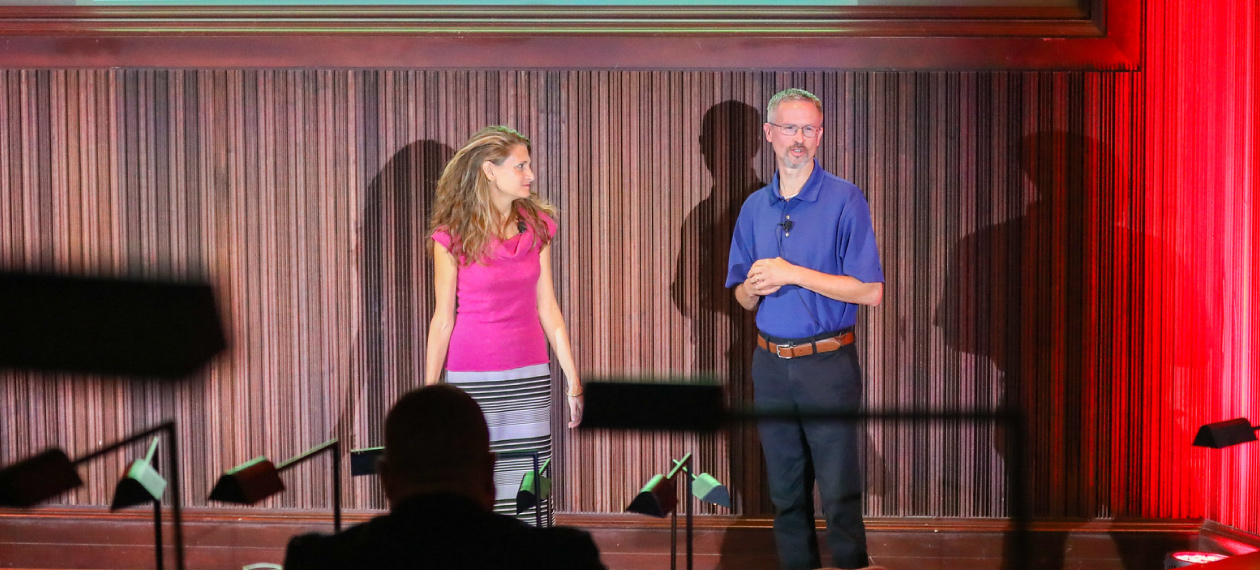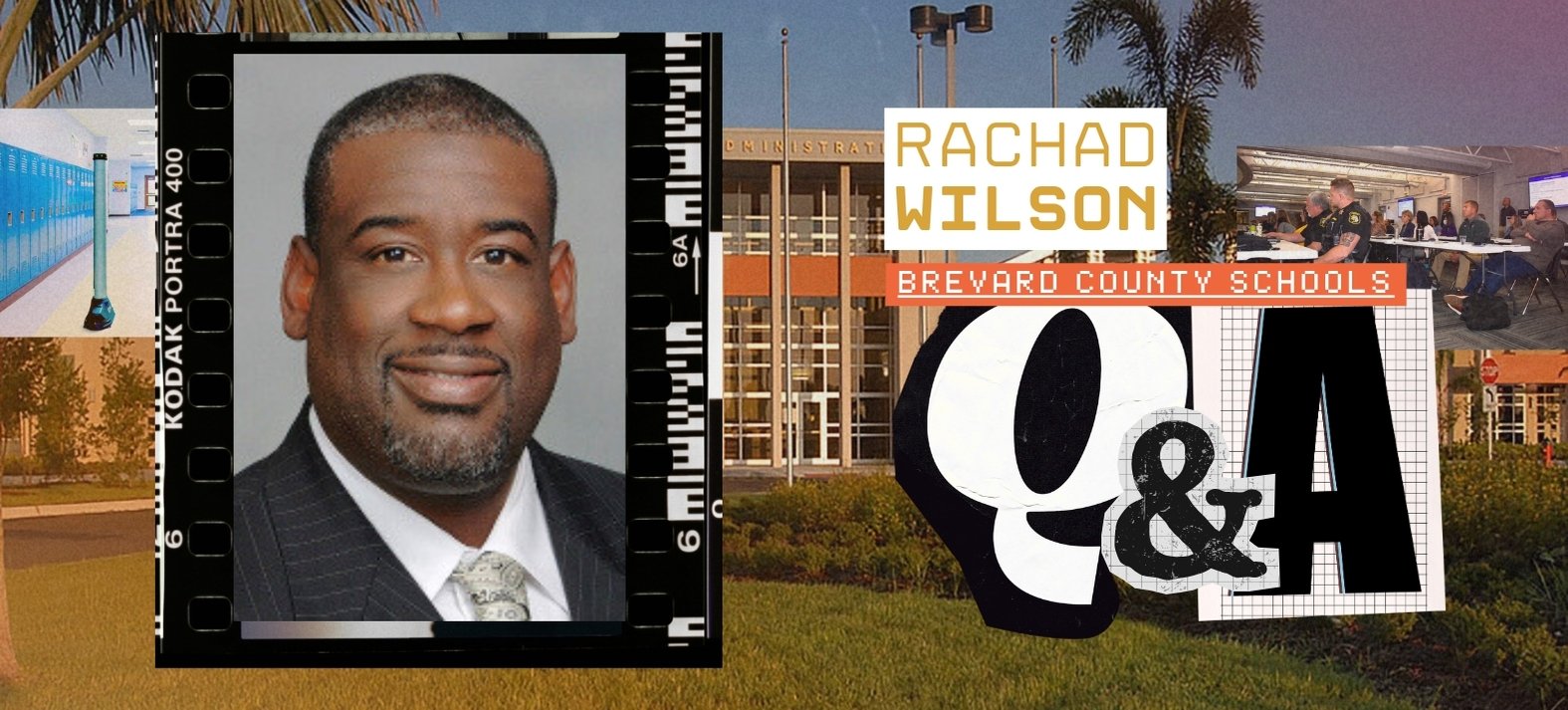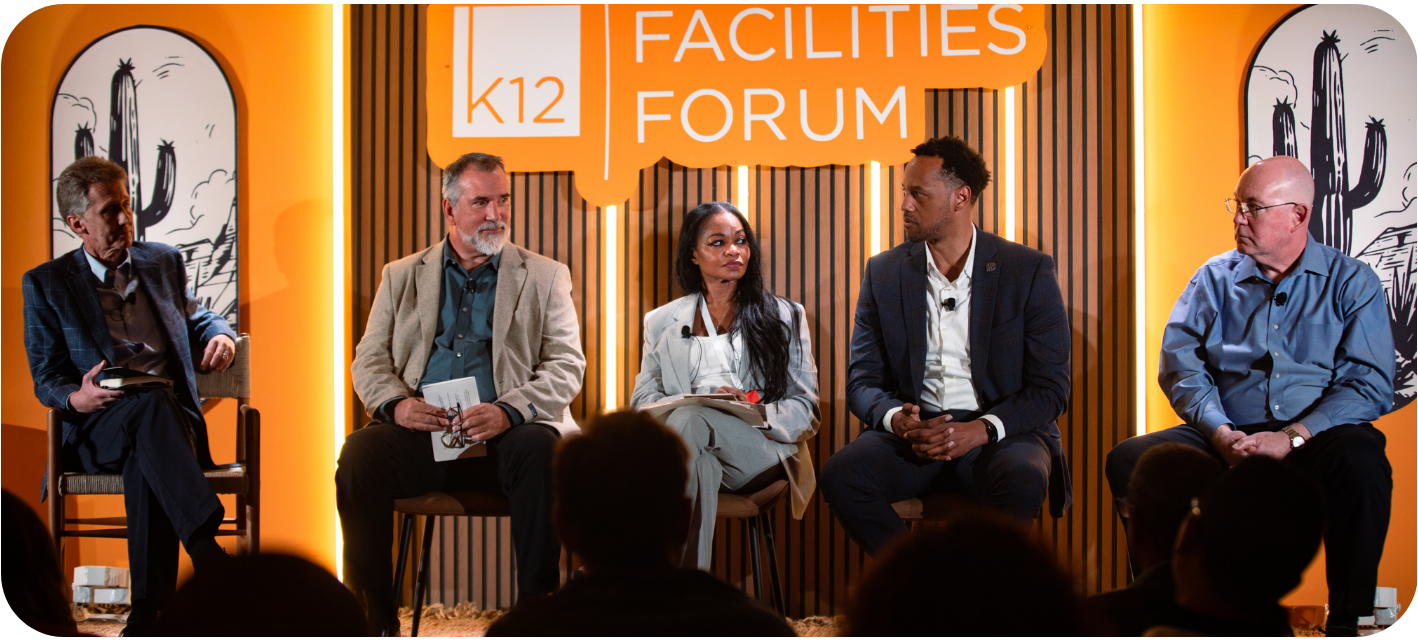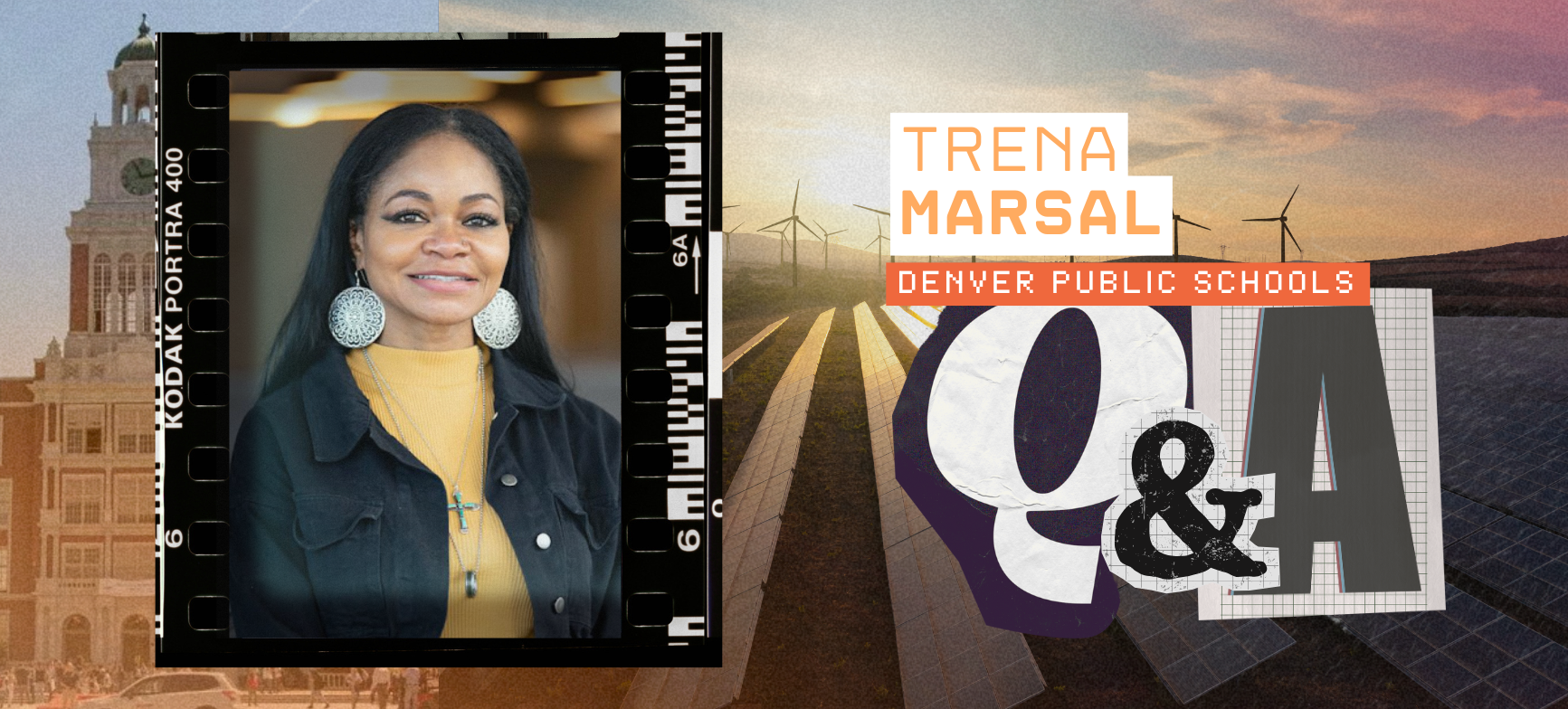The future of school facilities, much like the present and very recent past of facilities, will be shaped by unprecedented volatility. On the bright side, the last two years have given the industry more than a little preparation for what lies ahead.
“We obviously are in totally unpredictable times,” said Karin Goldmark, former New York City Deputy Chancellor of School Planning and Design, at the K12 Facilities Forum. “But we have started to get a sense of what those unpredictable questions are that are facing us.”
Fluctuating enrollments and staffing, budgets seesawing between cuts and stimulus, unprecedented weather events that expose the fragility of our buildings – facilities leaders have their work cut out for them. Over the course of her presentation, Goldmark explained how they can make decisions that will shape the lives of students and educators for years to come, in a world that’s only beginning to take its shifting, unpredictable shape.
The Source of Community Resilience
Goldmark uses four principles to guide her own thinking about the future. The first is the Seven Generations Principle, a philosophy believed to originate with indigenous Americans. In essence, it holds that when we make long-term decisions, we should consider how they will affect people seven generations in the future, or roughly 240 years from now. "We need to be thinking about decisions with that kind of a timeframe because we are investing for the long term," Goldmark said.
Her second principle is elegantly blunt: “The earth does not care about your politics.” That is, the real-world conditions governing long-term facilities needs – be they climate fluctuations or, say, deadly pathogens – won’t magically steer clear of states, counties, and municipalities whose governments choose to ignore them. If facilities leaders don’t plan for changing physical realities now, they’ll suffer the consequences later.
“The earth does not care about your politics.”
Goldmark’s final two principles go hand-in-hand: the resilience of a community relies on its school buildings, and school buildings rely on their facilities teams. This means that communities will not be able to meet whatever challenges lie ahead without their facilities personnel. “That resilience relies on you and your team,” Goldmark said. “You’re the source of reliability of school buildings, and school buildings are the source of community resilience.”
Net Zero, Now
With these principles in mind, Goldmark proposed one important step school districts should take to prepare for the future: ensure that all new buildings are Net Zero Energy (NZE). “First of all, any other path is going to mean you will be retrofitting in your future – so that's not actually responsible capital planning,” she explained. “The second reason is that there are two kinds of states in the United States right now. There are states with an aging power grid and underinvestment in school facilities, and then there are states with those two factors plus really ambitious emissions reductions goals. So whichever kind of state you're in, Net Zero Energy makes sense long-term.”
The idea might seem bold, but Goldmark said it’s actually not bold enough. “Net Zero Energy needs to be the floor, not the reach goal,” she said. “That role as a community anchor really requires us to think long-term. How do you actually have a school building that can survive and thrive in challenging settings?”
Learning from Warren County, KY
To answer this question Goldmark brought up Mike Wilson, Director of Facilities for Warren County Public Schools in Kentucky. Notably, he and Goldmark belong to opposing political parties; all the more reason to invite him on stage with her to illustrate the nonpartisan nature of the challenges ahead.
As Wilson explained, Warren County is the first district in Kentucky to appoint an Energy Manager; it’s also home to the first Net Zero Energy school building in the country. Built out of insulated concrete forms (ICF), Richardsville Elementary has been open for eleven years and has never paid an electricity bill. “Matter of fact, we get a check back from our utility provider at the end of the year, for the amount of electricity that we generated above and beyond,” Wilson said.
Warren County currently boasts two NZE schools, and every school it builds is NZE-ready thanks to the district’s adoption of technology like ICF construction, LED lighting, and geothermal heating and cooling. Wilson proudly stood by the tax increases it took to get to this point, stressing that he made it his mission to put every penny to good use. He went so far as to argue that every publicly funded building should be built to Net Zero standards.
“It makes sense in a lot of different ways,” he said. “I don't care if you come from the left, the right, the center – at the end of the day, I'm just concerned that we have buildings that are sustainable for the long term.”
A Matter of Scope
As Wilson left the stage, Goldmark reiterated that NZE should be a baseline goal, not the end goal. The next thing facilities leaders need to prepare for is reducing Scope 3 emissions. Distinct from Scope 1 emissions (from fuel burned in district-owned assets, like buildings and buses) and Scope 2 emissions (from consumption of purchased energy), Scope 3 emissions are the bulk of the iceberg when it comes to energy: emissions from purchases, leased assets, waste streams, staff and student commutes, travel financed by the district, study abroad travel, supply chains, even conferences. The list goes on.
“For most institutions, 50-60 percent of the emissions associated with the enterprise are in Scope 3,” Goldmark said. “Our work in facilities over the next decade is going to start to focus on the Scope 3 work, and it's good for us to get a head start.”
What does that work entail? In addition to preparing for concurrent supply chain pressures and fiscal cliffs, school districts will have to figure out how to measure Scope 3 emissions in their various forms, then prepare for a long period of incremental changes. “This is not something where you're overnight going to go from where you are now to a 50 percent reduction,” Goldmark said. “It's going to take a series of small actions and teaching and learning new habits.”
It’s not just about building NZE schools, but about developing new behaviors around the way we act in those buildings: how we dispose of waste, for instance, or how we purchase and use paper. Schools may also have to develop circular economies to accommodate supply chain and budget shortfalls. “If I have markers in my school that I don't need, and you have paint in your school that you don't need, how can we start to trade that and still have honest budgeting?” Goldmark asked.
Due Dates
Goldmark concluded her presentation with the rough timeline she expects broader policy developments to coalesce around. Within one to five years, she expects NZE construction to become the norm for new buildings. Within five to 10 years, she said, the industry will need “real answers on energy, resilience, and independence, so that schools can keep functioning even if the grid is not functioning.” And within 10 to 20 years, the industry will need meaningful ways to deal with Scope 3 emissions.
“Ten years can feel like a thousand, but it’s also very, very soon for long-term planning,” she cautioned. “Scope 3 is coming for us, and we should get to it before it comes and knocks us over.”

Posted by
Join us at the K12 Facilities Forum!
The community for district and facilities leaders
Nov 8-10, 2026 | San Antonio, TX









-3.png)

Comments